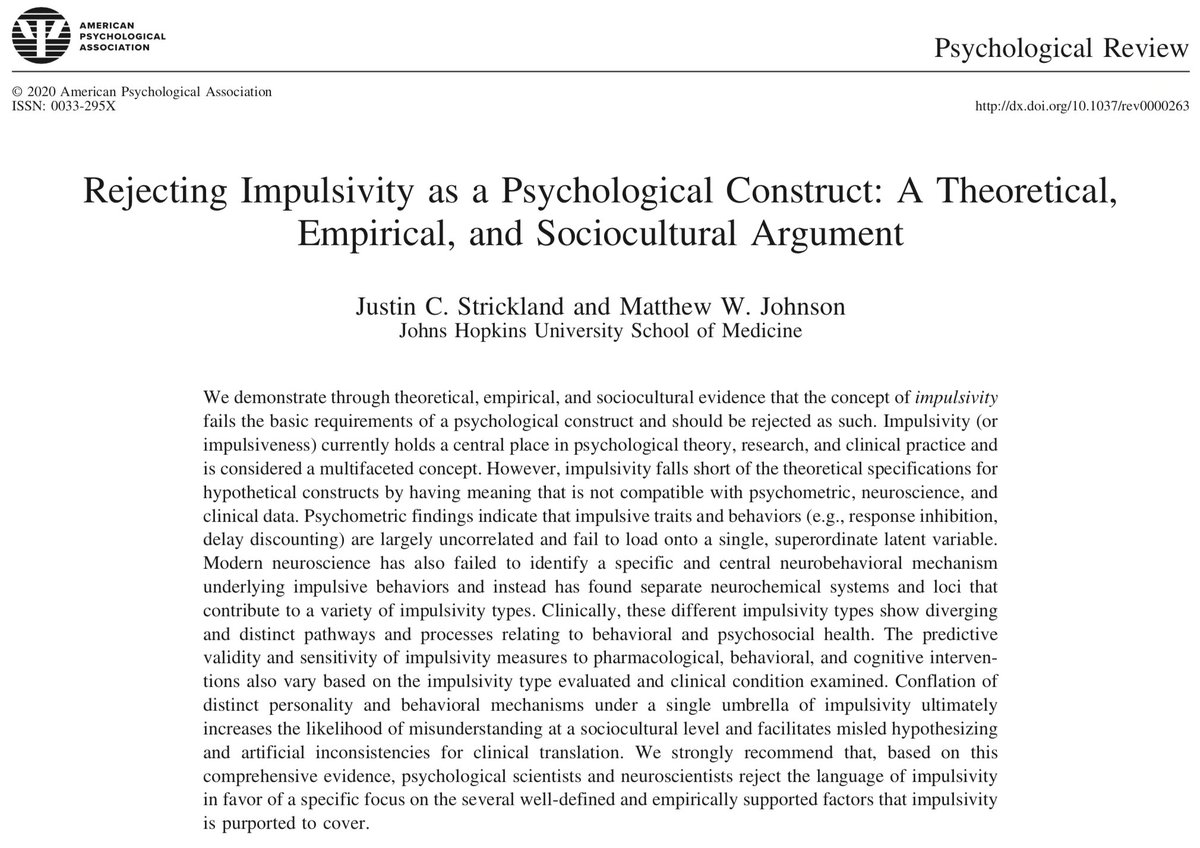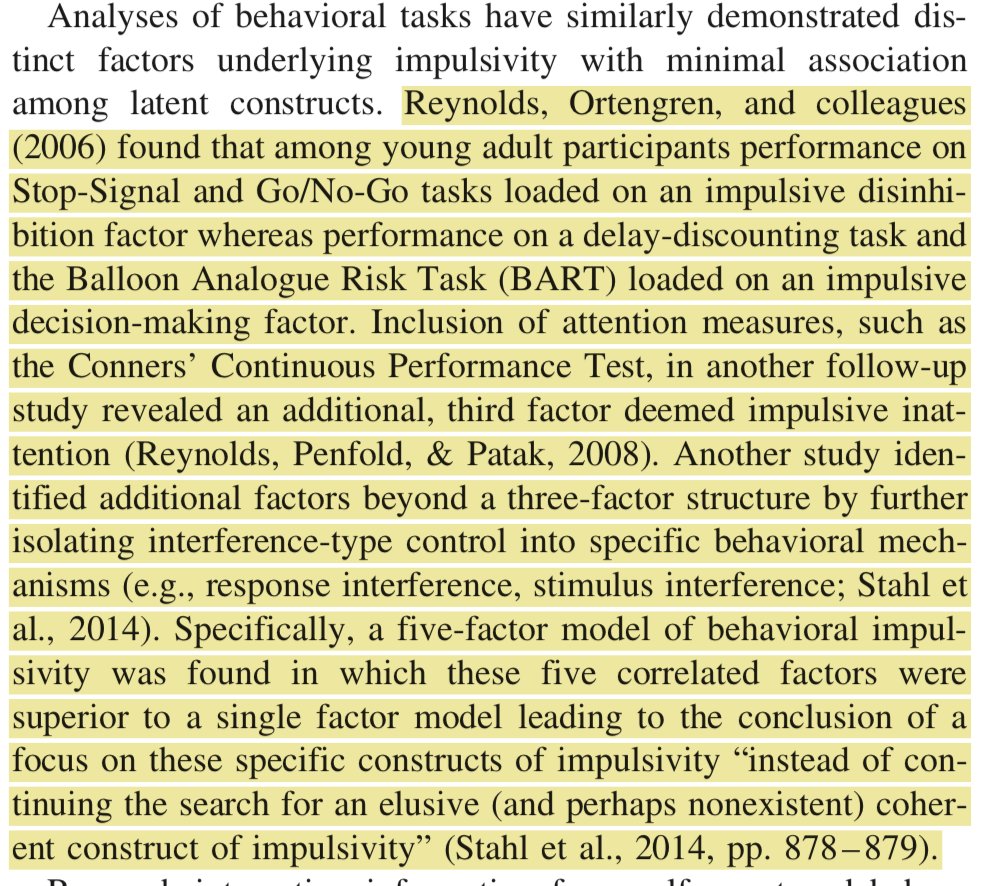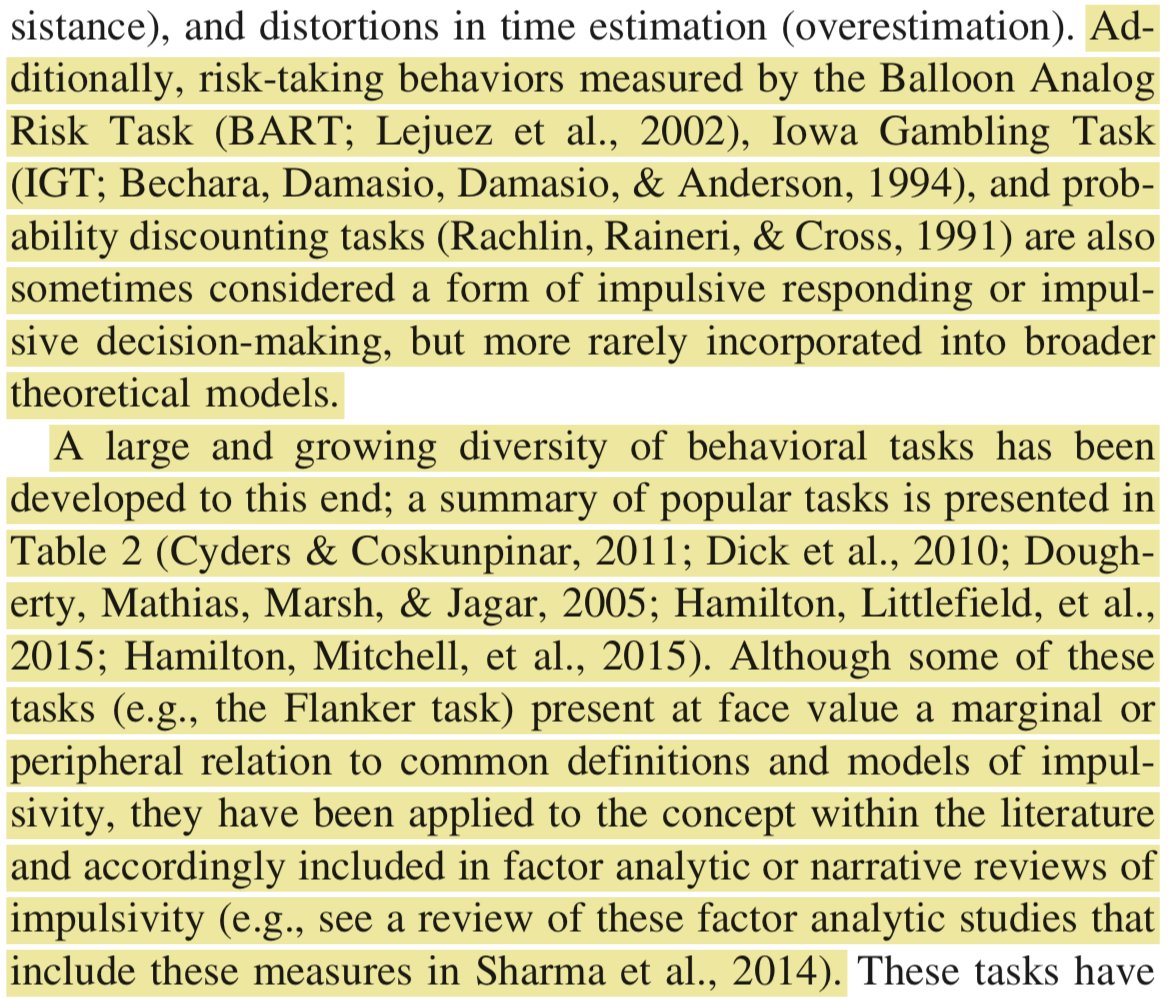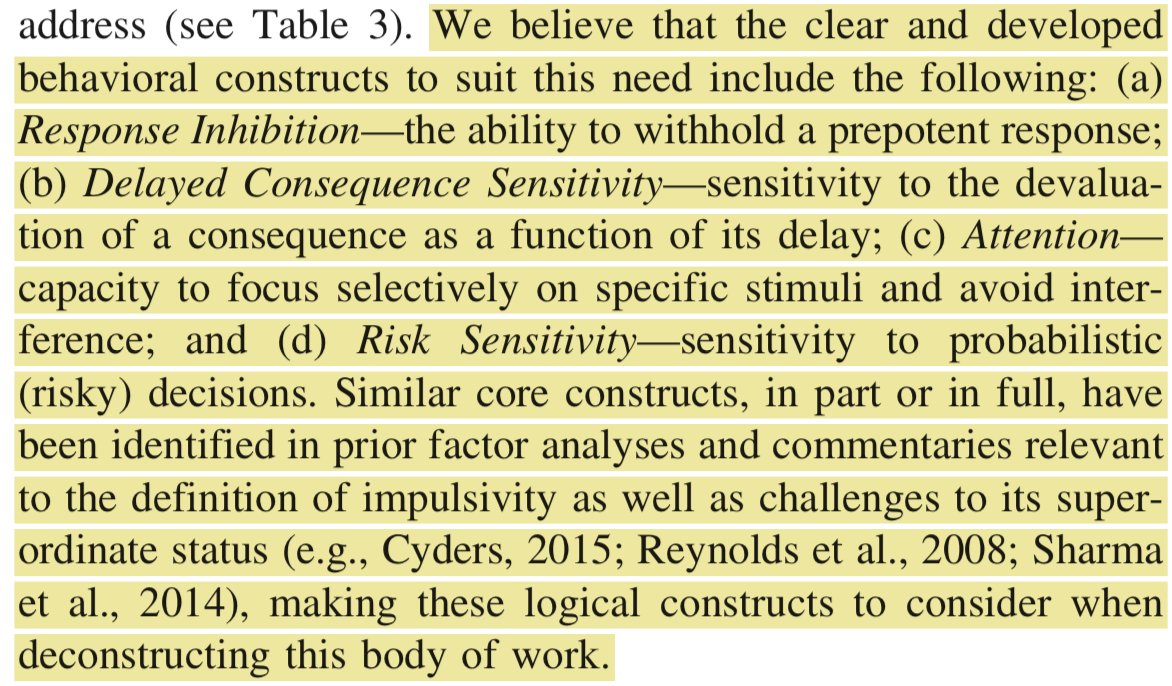1/10 This is an interesting paper, but IMO it misses the core problem: upon finding that behavioral measures of impulsivity don& #39;t load to a single factor, the authors reject "impulsivity" as a construct. My Q—why not reject factor analysis instead?
2/10 For example, the below findings are often presented as if we should be surprised, or that we should assume summary stats from these tasks should reflect the same underlying cognitive process that can be captured with factor analysis a priori.
3/10 Same with other tasks described below, including the Iowa Gambling Task and probability discounting tasks. We have an overabundance of studies showing summary stats don& #39;t correlate:
4/10 Yet, a look into the cognitive modeling literature, wherein we have developed multiple mathematical models of EVERY TASK MENTIONED ABOVE, will show that these ideas are not only misguided, but that we have moved on from them despite their continuity in mainstream psychology.
5/10 Case 1: the Iowa Gambling Task. There are 5+ models of just this task alone, each breaking behavior into distinct cog mechanisms:
1) https://psycnet.apa.org/record/2002-17916-003
2)">https://psycnet.apa.org/record/20... https://onlinelibrary.wiley.com/doi/full/10.1080/03640210802352992
3)">https://onlinelibrary.wiley.com/doi/full/... https://psycnet.apa.org/record/2013-42595-001
4)">https://psycnet.apa.org/record/20... https://onlinelibrary.wiley.com/doi/full/10.1111/cogs.12688
5)https://onlinelibrary.wiley.com/doi/full/... href=" https://journals.plos.org/ploscompbiol/article?id=10.1371/journal.pcbi.1006989">https://journals.plos.org/ploscompb...
1) https://psycnet.apa.org/record/2002-17916-003
2)">https://psycnet.apa.org/record/20... https://onlinelibrary.wiley.com/doi/full/10.1080/03640210802352992
3)">https://onlinelibrary.wiley.com/doi/full/... https://psycnet.apa.org/record/2013-42595-001
4)">https://psycnet.apa.org/record/20... https://onlinelibrary.wiley.com/doi/full/10.1111/cogs.12688
5)
6/10 Case 2: The Balloon Analogue Risk task (BART). There are 3+ models of this task in the literature, again breaking down behavior into different cog mechanisms:
1) https://psycnet.apa.org/record/2005-13637-006
2)">https://psycnet.apa.org/record/20... #br000275">https://www.sciencedirect.com/science/article/abs/pii/S0022249610001112 #br000275
3)https://www.sciencedirect.com/science/a... href=" https://psyarxiv.com/sdzj4/ ">https://psyarxiv.com/sdzj4/&qu...
1) https://psycnet.apa.org/record/2005-13637-006
2)">https://psycnet.apa.org/record/20... #br000275">https://www.sciencedirect.com/science/article/abs/pii/S0022249610001112 #br000275
3)
7/10 Case 3: Delay+Probability Discounting. There are far too many models for me to list here, but in general, these tasks are special cases of more general risky intertemporal choice tasks, of which we have many models:
1) https://link.springer.com/article/10.3758/s13423-017-1330-8
2)https://link.springer.com/article/1... href=" https://link.springer.com/article/10.1007%2FPL00005482">https://link.springer.com/article/1...
1) https://link.springer.com/article/10.3758/s13423-017-1330-8
2)
8/10 Case 4: Go/No-go and Stop-signal tasks. Same story here:
1) http://dora.erbe-matzke.com/papers/StopSignal_chapter.pdf
2)">https://dora.erbe-matzke.com/papers/St... https://www.ncbi.nlm.nih.gov/pmc/articles/PMC2752340/
3)https://www.ncbi.nlm.nih.gov/pmc/artic... href=" https://www.ncbi.nlm.nih.gov/pmc/articles/PMC2701630/">https://www.ncbi.nlm.nih.gov/pmc/artic...
1) http://dora.erbe-matzke.com/papers/StopSignal_chapter.pdf
2)">https://dora.erbe-matzke.com/papers/St... https://www.ncbi.nlm.nih.gov/pmc/articles/PMC2752340/
3)
9/10 Despite all this work, none of it is alluded to in this paper. Why? Is in not relevant if it is not factor analysis? Is factor analysis the only method that can be used to identify some underlying construct? The authors seem to believe so, per their recommendations:
10/10 I think the field needs to face the hard truth that all behaviors are determined by multiple underlying mechanisms, and our models must account for this. We must move on from over-operationalization and reliance on atheoretical summary stats, on toward generative modeling.

 Read on Twitter
Read on Twitter





